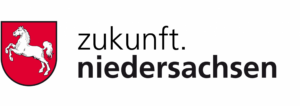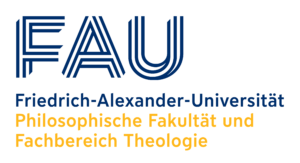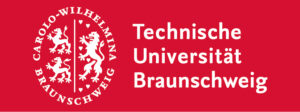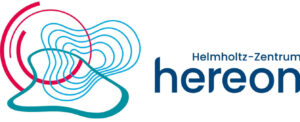Neandertaler im Norden
Joint project
Climate Change and Early Humans in the North (CCEHN)
Speakers of the joint project
Univ.-Prof. Dr. Antje Schwalb, Institut für Geosysteme und Bioindikation, Technische Universität Braunschweig
apl. Prof. Dr. Thomas Terberger, Niedersächsisches Landesamt für Denkmalpflege
Principal Investigators of subprojects
Project I: Palaeoclimate and palaeoenvironment of early humans and Neanderthals
Project I,1: Palaeoclimate variability, mechanisms and impacts on early humans
Prof. Dr. Antje Schwalb/ Dr. Sebastian Wagner
Project I,2: Landscape and environmental development during the Middle and Late Pleistocene
Prof. Dr. Brigitte Urban/ Prof. Dr. Jutta Winsemann/ Hon.-Prof. Dr. Felix Bittmann
Project II: Archaeology of early humans and Neanderthals in the north
Project II,1: Early humans and Neanderthals in interglacial context
Prof. Dr. L. Rahmstorf/ apl. Pof. Dr. Thomas Terberger/ Hon.-Prof. Dr. Felix Bittmann
Project II,2: Early humans and Neanderthals in glacial context
Dr. Marcel Weiß/ Dr. Gianpiero di Maida/ apl. Prof. Dr. Thomas Terberger/ Hon.-Prof. Dr. Felix Bittmann
Project III: Chronological framework – Chronometry of Quaternary archives and Lower/ Middle Palaeolithic sites
Dr. Tobias Lauer/ Sumiko Tsukamoto/ Dr. David Tanner
Participating institutions in Lower Saxony and cooperation partner
Technische Universität Braunschweig, Institut für Geosysteme und Bioindikation (A. Schwalb)
Leibniz Universität Hannover, Institut für Geologie (J. Winsemann)
Leuphana Universität Lüneburg, Institut für Ökologie (B. Urban)
Universität Göttingen, Seminar für Ur- und Frühgeschichte (L. Rahmstorf/ T. Terberger) and Anthropologisches Institut (aDNA-Labor) (S. Hummel)
Leibniz Institut für Angewandte Geophysik (D. Tanner/ Ch. Zeeden/ S. Tsukamoto)
Niedersächsisches Landesamt für Denkmalpflege (U. Böhner/ D. Leder/ T. Terberger)
Niedersächsisches Institut für historische Küstenforschung (F. Bittmann)
Partner: UNESCO Global Geopark Harz/ Gesellschaft Unicorno fossile e.V. (H. Zellmer/ R. Nielbock) (agreement in preparation)
Partners outside Lower Saxony
Friedrich-Alexander-Universität Erlangen-Nürnberg, Institut für Ur- und Frühgeschichte (M. Weiß)
Helmholtz-Zentrum Geesthacht, Zentrum für Material- und Küstenforschung, Institut für Küstenforschung, Geesthacht (S. Wagner)
Universität Tübingen (T. Lauer/ N. Conard/ J. Serangeli)
NeanderEDGE: Responding to a changing world: Neanderthal Extinction and Dispersal in glacial Extremes (T. Kellberg Nielsen, Aarhus University, Denmark)
Funding
The project is financed by the Lower Saxony MWK with funds from the zukunft.niedersachsen program of the VolkswagenStiftung.
Abstract
The current human-made climate change affects all spheres of our society and its impact on the planet’s ecosystems is yet unknown. By exploring past human-environment-climate relationships, we infer socio-behavioral response to climatic and environmental shifts. Furthermore, palaeoclimate modelling and the reconstruction of palaeo-landscape will provide important insights into natural climate shifts.
The aim of the project “Climate Change and Early Humans in the North” (CCEHN) is to investigate the evolutionary roots of human adaptation to climatic and palaeo-environmental shifts at the northern limit of their former distribution area. Here, the glacial/ interglacial cycles led to enormous climatic and environmental changes. The archaeological record of Lower Saxony, with several outstanding sites, shows that early humans inhabited this area since about 300.000 years, but it is unclear whether this happened mostly during the temperate phases, or also during the colder periods. To better understand human adaptational behavior, we will: (1) study the palaeoenvironment and palaeoclimatic changes, and landscape evolution on macro-, meso- and micro-scales, (2) link the resulting data to the archaeological record, and (3) finally establish a high-resolution chronological framework for the period from c. 300.000 years to 40.000 years ago (Marine Isotope Stages 9-3).
Lower Saxony is an excellent study area for this research approach: Its rich Palaeolithic record that is preserved in open-air sites and caves, its sediment archives that document the advance- and retreat of Pleistocene ice-sheets, as well as periglacial conditions and warm-climate periods of the past, the relationship between climatic shifts, concomitant changes of landscape and ecosystems, and the presence of early humans can be unraveled.
In the CCEHN project design, we bring together archaeology, geology and sedimentology, geophysics, paleoecology GIS-applications as well as aDNA-analysis in a multifaceted approach. We integrate the research expertise, ranging from archeology and geo-biosciences in Lower Saxony and beyond, with the goal to establish a research cluster in the field of human-environment-climate-adaptations.
Project II,2 – Early humans and Neanderthals in glacial context – Archaeology of the Lowlands (Marcel Weiß, FAU)
We intend to analyse Neanderthal occupations at the northern extreme of their habitat during a time of rapid climate oscillations (late MIS 5 to MIS 3) that included the first glacial maximum (MIS 4) and HS 4-5, and DO events 9-17 during MIS 3. We aim to contextualise human occupation data with detailed palaeoenvironmental reconstructions and high-resolution chronometric data.
1. What are the limiting environmental factors that allowed human presence in the north at any given location and time? What were the favouring factors?
2. To what extent did rapid climatic fluctuations influence the development of technological and socioeconomic solutions, as well as changes in human mobility?
3. How did stone artefact technology, raw material procurement, and management patterns vary? And can these patterns be linked to palaeoenvironmental factors?
4. Did prey selection change over time, and was there any preference for specific groups (species, prime-age dominance, male, etc.)?
Our aim is to approach these questions by investigating human site occupation intensities, provisioning strategies (raw material and food) and technologies (lithics and bone artefacts, if preserved) in relation to palaeoclimatic and palaeoenvironmental dynamics. We will investigate variability in stone artefact technologies and procurement patterns aiming to draw conclusion on human adaptation to palaeoenvironmental shifts. Further interregional compassions will then allow us to draw broader inferences on past human-environment feedbacks.
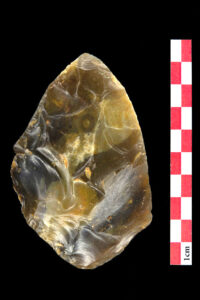
Preliminary work:
Re-excavations and surveys, initial radiometric dating programs as well as re-analyses of various environmental and artefactual materials are pursued at Lichtenberg (MPI/ LIAG, since 2017). At Lichtenberg, we could identifiy several human occupations with a changing lithic technology between the last interglacial, the early Weichselian throughout the onset of the first glacial maximum (Hein et al., 2021; Weiss et al., 2022). Fieldwork in the last years was accompanied with an extensive vibrocoring and seismic campaign that provided promising information for future work on the palaeoenvironment (lake-level stands, vegetation, geomorphic activity) during the time of occupation . The sediment cores delivered well-preserved botanical remains and bioindicators showing the high potential for palaeoenvironmemental studies. Already acquired dating samples on extensive sediment cores will enable us to trace climate shifts within a long high-resolution record that goes along with shifts in the lithic record.
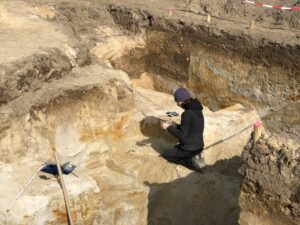
Future Work:
1) We will investigate the lowland sites Lichtenberg, Salzgitter-Lebenstedt and Ochtmissen.
2) The following is planned at Lichtenberg:
• Excavation of identified find layers and survey for new find locations to investigate settlement patterns and changing site functions
• Analysis of lithic assemblages: techno-typogical analyses, raw material analyses, 3D geometric morphometrics, and diachronic assemblage comparison
• Geological, sedimentological and geophysical investigations aiming for precise dating and palaeoenvironmental reconstruction
3) Small scale investigations are planned at Salzgitter-Lebenstedt and Ochtmissen with the aim to obtain new palaeoenvironmental, chronological and archaeological data.
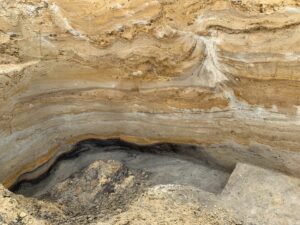
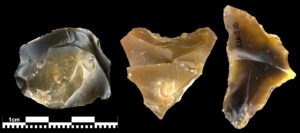
References
Hein, M., Urban, B., Tanner, D.C., Buness, A.H., Tucci, M., Hoelzmann, P., Dietel, S., Kaniecki, M., Schultz, J., Kasper, T., Suchodoletz, H., Schwalb, A., Weiss, M., Lauer, T., 2021. Eemian landscape response to climatic shifts and evidence for northerly Neanderthal occupation at a palaeolake margin in northern Germany. Earth Surface Processes and Landforms esp.5219. https://doi.org/10.1002/esp.5219
Weiss, M., Hein, M., Urban, B., Stahlschmidt, M.C., Heinrich, S., Hilbert, Y.H., Power, R.C., Suchodoletz, H. v., Terberger, T., Böhner, U., Klimscha, F., Veil, S., Breest, K., Schmidt, J., Colarossi, D., Tucci, M., Frechen, M., Tanner, D.C., Lauer, T., 2022. Neanderthals in changing environments from MIS 5 to early MIS 4 in northern Central Europe – Integrating archaeological, (chrono)stratigraphic and paleoenvironmental evidence at the site of Lichtenberg. Quaternary Science Reviews 284, 107519. https://doi.org/10.1016/j.quascirev.2022.107519

